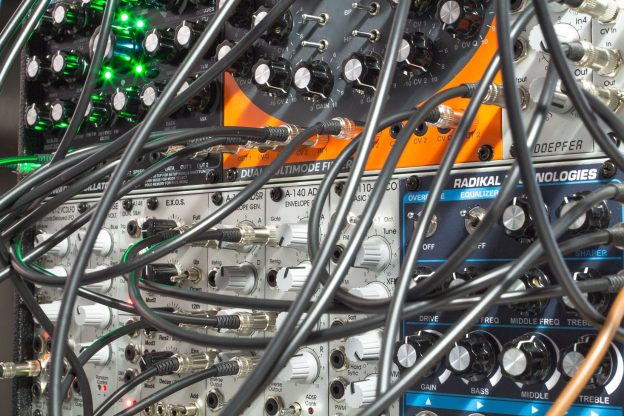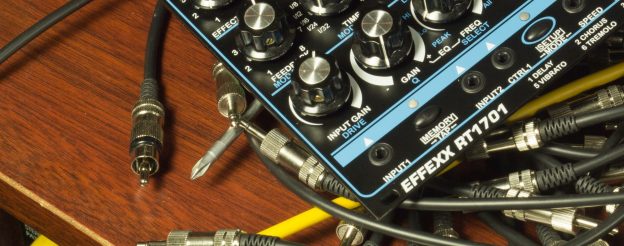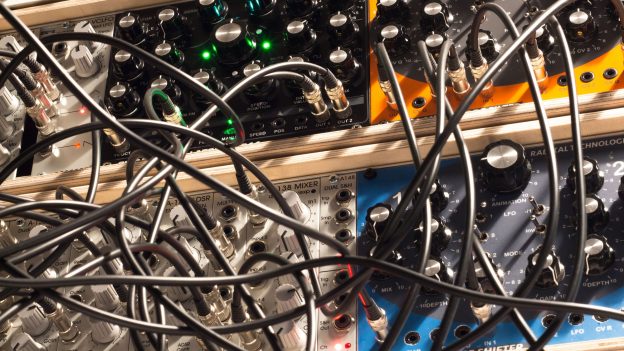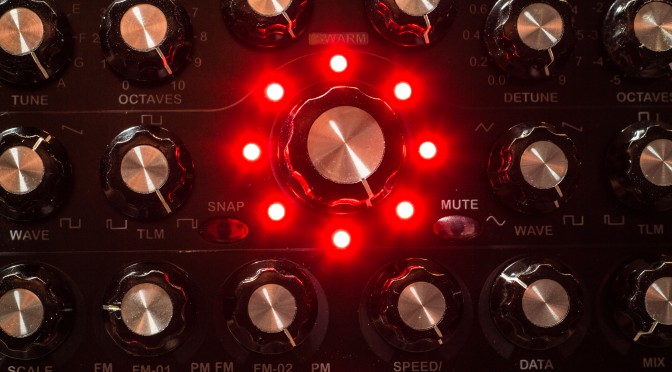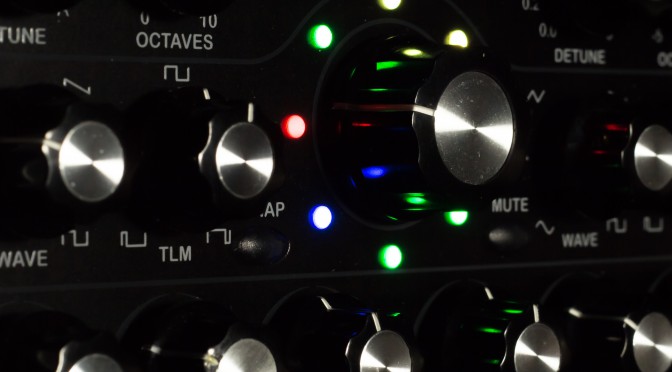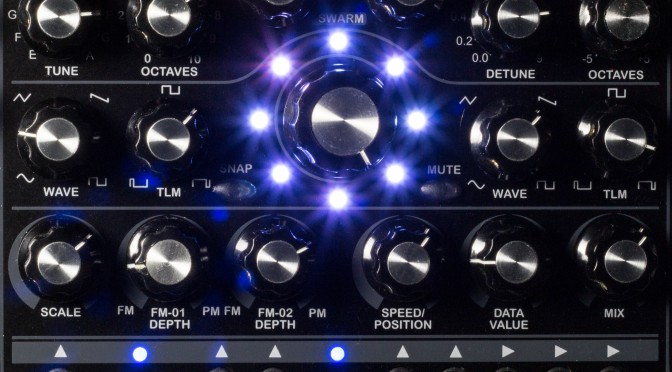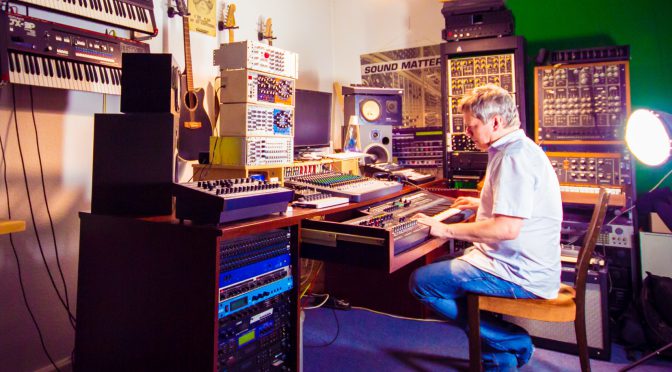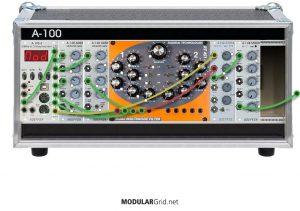![]() I created a modular patch to create some random signals. I just wanted to know, what I can create out of random signals with a little help of the EFFEXX module. I created the random signal, that is audible at the very beginning of the file with the delta CEP A and a Sample and Hold Module (Doepfer A148). The LFO of the Delta clocks the Sample and Hold Circuit. Gate signal must have a minimum voltage. I thought, if I apply noise at the input of the sample and hold circuit, I will get a random voltage that is sometimes above the minumum level and sometimes below. That creates my random triggers. I fed the Sample and Hold output into the Gate trigger input of the envelope. I am feeding the oscillator or noise into the filter and program a very short envelope to create this short noise bursts. From there I go directly into the EFFEXX and from there to my recording mixing desk. I am using Reverb, the String Filter, the Pitch Shifter and the post Lowpass filter for this patch.
I created a modular patch to create some random signals. I just wanted to know, what I can create out of random signals with a little help of the EFFEXX module. I created the random signal, that is audible at the very beginning of the file with the delta CEP A and a Sample and Hold Module (Doepfer A148). The LFO of the Delta clocks the Sample and Hold Circuit. Gate signal must have a minimum voltage. I thought, if I apply noise at the input of the sample and hold circuit, I will get a random voltage that is sometimes above the minumum level and sometimes below. That creates my random triggers. I fed the Sample and Hold output into the Gate trigger input of the envelope. I am feeding the oscillator or noise into the filter and program a very short envelope to create this short noise bursts. From there I go directly into the EFFEXX and from there to my recording mixing desk. I am using Reverb, the String Filter, the Pitch Shifter and the post Lowpass filter for this patch.
![]() Für diese Demo habe ich geschaut, was man so aus einer zufälligen Abfolge von Signalen herausholen kann, wenn ich sie durch den EFFEXX schicke. Man hört zu Anfang das Ursprungssignal, das ich mit dem Delta CEP A und einem Doepfer A148 Sample and Hold Modul erzeugt habe. Für das Random Signal mache ich mir zu nutze, dass man eine gewisse Mindestspannung benötigt, um eine Hüllkurve per Gate Eingang zu triggern. Von daher takte ich die Sample und Hold Schaltung mit dem LFO und lege am Eingang den Rauschausgang des Delta CEP A an. Am Ausgang des Sample & Hold Moduls kann man sofort erkennen, dass nun positive und negative Spannungen erzeugt werden. Die positiven triggeren die Hüllkurve sofern sie über 2.5 Volt liegen. Die negativen und kleineren Spannungen triggeren die Hüllkurve nicht. Die Hüllkurve wird sehr kurz eingestellt. Ich habe das Signal ausgedünnt, in dem ich das Bandpass-Filter verwende.
Für diese Demo habe ich geschaut, was man so aus einer zufälligen Abfolge von Signalen herausholen kann, wenn ich sie durch den EFFEXX schicke. Man hört zu Anfang das Ursprungssignal, das ich mit dem Delta CEP A und einem Doepfer A148 Sample and Hold Modul erzeugt habe. Für das Random Signal mache ich mir zu nutze, dass man eine gewisse Mindestspannung benötigt, um eine Hüllkurve per Gate Eingang zu triggern. Von daher takte ich die Sample und Hold Schaltung mit dem LFO und lege am Eingang den Rauschausgang des Delta CEP A an. Am Ausgang des Sample & Hold Moduls kann man sofort erkennen, dass nun positive und negative Spannungen erzeugt werden. Die positiven triggeren die Hüllkurve sofern sie über 2.5 Volt liegen. Die negativen und kleineren Spannungen triggeren die Hüllkurve nicht. Die Hüllkurve wird sehr kurz eingestellt. Ich habe das Signal ausgedünnt, in dem ich das Bandpass-Filter verwende.
Am Anfang der Audio Datei hört man das Resultat, dass dann in das EFFEXX Modul eingespeist wird. Im EFFEXX Modul benutze ich im Verlaufe der Demo die folgenden Effekte:
String-Filter, Pitch Shifter, Reverb und Post Lowpass Filter. Ich habe eine serielle Abfolge der Effekte gewählt.
